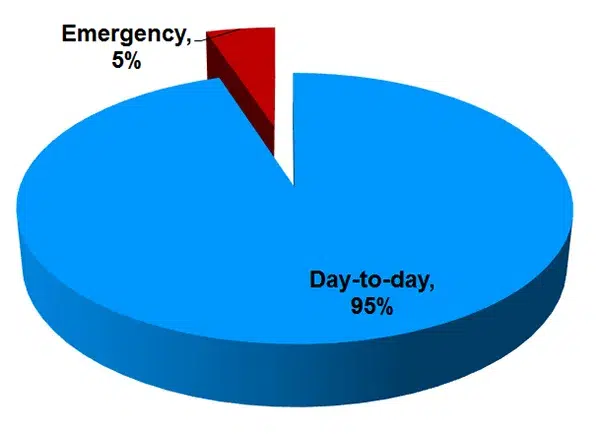The press release is not dead! The press release, or “news release” as many call it, effectively communicates news or information in a concise and engaging manner, capturing the attention of journalists and readers alike. At JGPR. we issue as many as 20 press releases per day for our clients.
While earlier eras of public relations geared the press release almost exclusively toward news editors and reporters, today a release document can serve many forms, and it is a vital tool in the arsenal of virtually all public information officers.
Today, a press release can serve both traditional “earned media,” that is, news stories produced by professional journalists that a PIO may pitch or invite a reporter to cover. It also serves “owned media” including website/blog posts, social media, print/email newsletters and much more.
Releases show and tell stories in a compelling manner, and they are meant to be fairly short/concise, with the most important elements at the top of the release. This is what is known as the “inverted pyramid.” If you imagine an upside down triangle: the top contains the meat and potatoes of the story, answering the who/what/when/where questions, and each paragraph is in descending order of importance, with quotes, background info and support details to follow. There’s a rationale for this: If a reader (a journalist for instance) reads only the first 1-2 paragraphs of a press release, they will know most of what they need too know about the story.
Here are more key elements of a great press release:

- Compelling headline: The headline should be attention-grabbing, concise, and clearly convey the main message of the press release. When posting to web, don’t forget to keep it brief for good Google results!
- Strong lead: The opening paragraph, or lead, should succinctly summarize the most important information of the press release, answering the who, what, where, when, why, and how questions.
- Clear and concise body: The body of the press release should provide more details about the news or information being announced. It should be well-organized, with each paragraph focusing on a single point and supporting information provided in a clear and concise manner.
- Quotes: Including quotes from relevant stakeholders, such as company executives or key individuals involved in the news, adds credibility and human interest to the press release. Quotes should be authentic and provide valuable insights or perspectives, however a PIO is allowed to write quotes for their bosses. So a police PIO can write a quote for their chief in a press release, as long as the chief approves the language.
- Facts and figures: Including relevant data, statistics, or other factual information can help support the main points of the press release and lend credibility to the announcement.
- Boilerplate: A boilerplate is a brief paragraph at the end of the press release that provides background information about the company or organization issuing the release. It should include key details such as the company’s mission, history, and contact information.
- Multimedia elements: Incorporating multimedia elements such as images, videos, or infographics can enhance the visual appeal of the press release and make it more engaging for readers.
- Contact information: Provide contact information for media inquiries, including the name, phone number, and email address of a spokesperson or media contact who can provide additional information or arrange interviews. Cell phone is best!
- Release date : Clearly indicate the release date of the press release to ensure that journalists understand that the story is current.
- Distribution: Once the press release is finalized, distribute it through appropriate channels such as your agency website, social media platforms, and targeted email lists to reach relevant journalists and media outlets. You should have the “news tips” and “news desk” emails for your TV, radio, online and print news outlets as well as the individual reporters’ and editors’ email addresses.
- Consistency: A PIO gets better with repetition. Don’t just write press releases when there is a fire, arrest or disaster. Write about your agency’s good news. In fact, FEMA says 95% of a PIOs produced content should not be released to an incident or emergency, but should be “blue sky day” news. FEMA incorporates this rule into all of its PIO training classes.
By incorporating these elements into a well-crafted item, you can effectively communicate news or information and increase the likelihood of media coverage and engagement from your target audience.
For more training on this topic, take JGPR Academy’s free for members on demand class on press release writing or buy John Guilfoil’s book, Public Relations: A Professional Approach (2023, Kendall Hunt Publishing).
